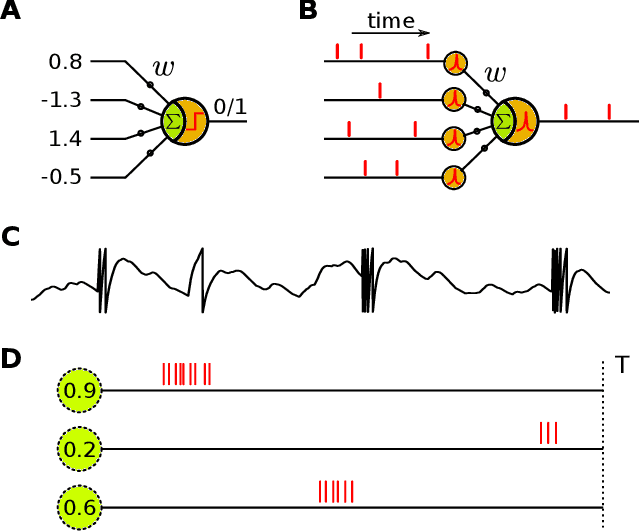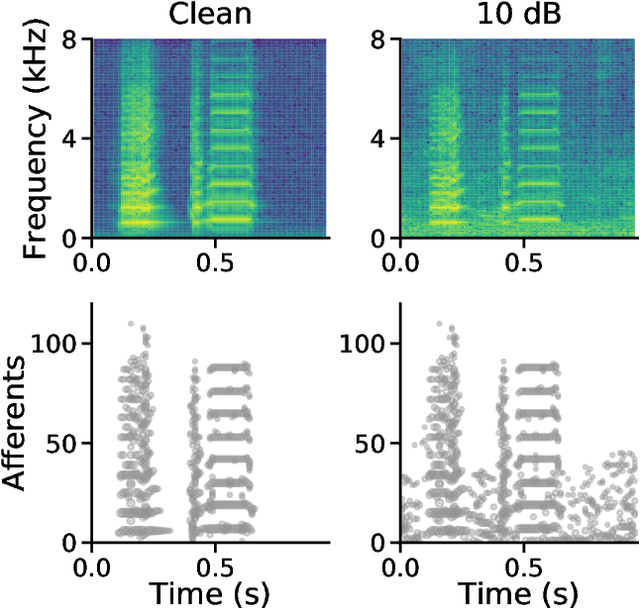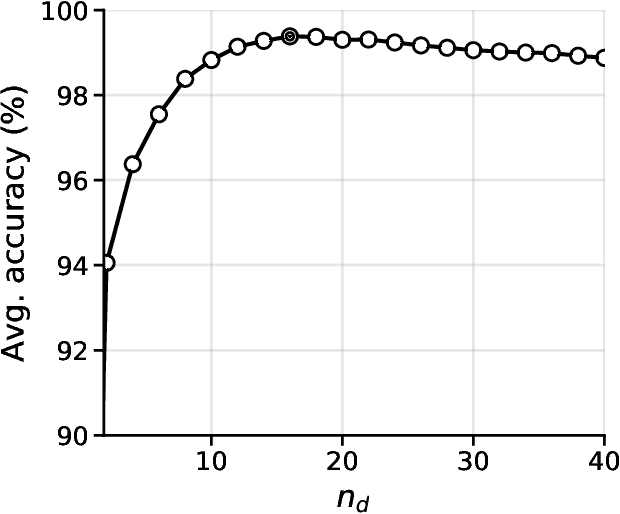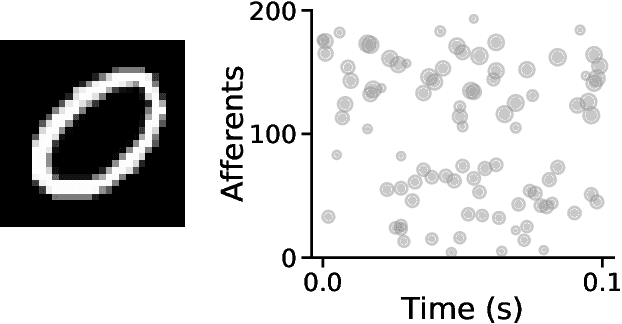Linqiang Pan
Synaptic Learning with Augmented Spikes
May 11, 2020



Abstract:Traditional neuron models use analog values for information representation and computation, while all-or-nothing spikes are employed in the spiking ones. With a more brain-like processing paradigm, spiking neurons are more promising for improvements on efficiency and computational capability. They extend the computation of traditional neurons with an additional dimension of time carried by all-or-nothing spikes. Could one benefit from both the accuracy of analog values and the time-processing capability of spikes? In this paper, we introduce a concept of augmented spikes to carry complementary information with spike coefficients in addition to spike latencies. New augmented spiking neuron model and synaptic learning rules are proposed to process and learn patterns of augmented spikes. We provide systematic insight into the properties and characteristics of our methods, including classification of augmented spike patterns, learning capacity, construction of causality, feature detection, robustness and applicability to practical tasks such as acoustic and visual pattern recognition. The remarkable results highlight the effectiveness and potential merits of our methods. Importantly, our augmented approaches are versatile and can be easily generalized to other spike-based systems, contributing to a potential development for them including neuromorphic computing.
 Add to Chrome
Add to Chrome Add to Firefox
Add to Firefox Add to Edge
Add to Edge